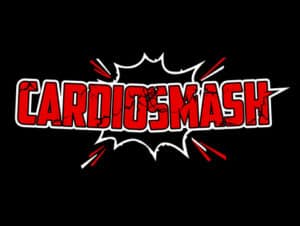We all like to “bro out” from time to time and think about if we were somehow restrained and could only do one exercise. What if that one exercise was pull-ups? Would doing pull-ups alone that be enough to get you big and muscular?
Pull-ups are one of the most challenging and effective resistance exercises in existence. Certainly one of the most difficult types of calisthenics (bodyweight only exercises). A true compound movement, pull-ups will work about half of your upper body muscle mass. While their muscle building effects on the back, biceps, and forearms, are extremely effective, obviously pull-ups do not do anything for the lower body, or the antagonistic upper body muscle groups. So, you can gain some serious muscle mass from just doing pull-ups, but you will not have a complete, balanced physique.
You can certainly accomplish a lot just by doing pull-ups (or chin-ups). It is a very challenging exercise that many people will not be able to do starting out. Let’s look at what you’ll gain from doing pull-ups, how many you should do, and how you measure up against other people.
Do pull-ups build muscle mass?
As a difficult and strenuous resistance exercise, pull-ups will certainly stimulate muscle growth. A lot of it!
While most exercises for your upper body will be performed using less than your bodyweight, pull-ups give you two choices: bodyweight plus more, or bodyweight only – no less!
All an exercise needs to do to cause muscle growth is to provide a good amount of resistance, and be difficult enough for your sets to be short enough to fall into the anaerobic category. Pull-ups definitely provide plenty of resistance and will usually supply a gratifying pump too!
Pull-ups are an important part of basic training for the US Marines and no one will argue with the fact that there’s a lot of big muscular guys in their ranks! So, if you do a bunch of pull-ups, and eat some protein, you’ll grow.
Remember, you must focus on good form, if you just swing yourself up and then drop down, instead of controlling your weight on the way up and down, your results will be underwhelming because you cheated yourself.
Can pull-ups build big biceps?
When most people think muscle, they think biceps. If biceps training is a priority for you, then pull-ups a great choice. No amount of curls of either the cable, barbell, or dumbbell varieties will come close to putting your biceps under the same amount of strain has pull-ups will.
Pull-ups are often thought of as primarily a back exercise. While the lats do the majority of the heavy lifting, the biceps provide the initial pull required to start the movement. This is the hardest part of the exercise, when your arms are fully extended. Then the biceps provide momentum and the final squeeze and tuck at the end to get your chin over the bar.
Even if you are impossibly light and wiry, you can always add more weight to a set of pull-ups and they will be the toughest thing you can do to your biceps in the gym.
Underhand as well as overhand and parallel grip positions will all work the biceps at different angles and help fully stimulate it into growth. So don’t forget to rotate through different hand positions.
Bonus variation: Bent-arm hang.
One of the best bicep exercises out there is the bent arm hang. Basically you get in pull up (or chin up) position, with your arms bent at the elbows at about 90 degrees. Then hang as long as you can, resisting the pull of your weight to straighten your arms. When you can no longer hold it stationary, lower yourself as slowly as possible. This will work your biceps very thoroughly. It is also a good beginner’s exercise for those who are trying to work their way up to being able to do a pull up.
Will pull-ups build a big back?
A strong muscular back is important to a balanced physique, and to keep your body strong and prevent unnecessary injuries. A thick, muscular back will also increase your chest measurement.
The two most basic back movements are downward pulls, and rows. Pull-ups can do both of these. There are a number of variations that you need to do if you want to get the most muscle growth in your back from pull-ups.
First and foremost, wide grip pull-ups. These are the best exercise known to mankind for widening the lats and making you look like you have wings. This variation targets the outer lats, although the forearms and biceps will still contribute, of course.
Narrow, parallel grip will make the pull-up into more of a rowing movement. The position of your hands on the narrow parallel handles will mean that you will lean back more and pull towards your chest.
Parallel shoulder width grip will also help develop thickness in the mid and outer back. This is a good one to do on the monkey bars at your local playground.
Narrow underhand grip (chin-ups) will place more emphasis on your biceps and rear deltoids, but will also work the muscles in your mid and inner back, creating a thickness there that will really help beef up your look.
Will just doing pull-ups build big forearms?
When you do a set of pull-ups, the limiting factor for many people will be their grip. Once your forearms are fatigued and your grip fails you, there’s no more reps getting cranked out. Your grip gives out, your set ends.
These smaller muscles are holding it all together when you do pull-ups or chin-ups. They will need to support all of your weight – plus the force your muscles generate in pulling it up to the bar. This is a tremendous forearm workout and will certainly help develop muscularity in the forearms as well as a vice-like grip that will aid you in improving your pull-up performance.
Many powerful bodybuilders don’t do any direct forearm work, instead they rely on barbell and dumbbell work for other body parts – particularly their back workout.
How many pull-ups is good?
The average untrained person may well not be able to do a single pull-up. While the average (not overweight) man should be able to do about 5-8, for women it is less, 1-3 is considered pretty decent.
Once a man can do 15+ without stopping, or 5+ for a woman, it is considered quite good. With regular training, getting to where you can do 20, 30, or even 50 pull-ups or more is possible.
In order to get to this point, it is important to go to failure on each set so you can increase your stamina. That is, instead of doing small sets when you can do more, and doing a lot of sets to reach a goal number of total reps, go all out each set until you reach that number.
For example, if you want to do 50 pull-ups total, instead of doing 10 sets of 5 reps, do 4 or 5 sets to failure. (Or however many it takes). This will require more rest between sets, but will train you to do more pull-ups in one go.
Is it okay to do pull-ups everyday?
It is OK to do pull-ups daily, but if you are really going hard and have significant soreness, it is best to get a day or two’s rest in between workouts.
However, if you do a more moderate workout and you do enough to stimulate the muscle (but not totally destroy it), you can do them daily – in fact it’s a great idea. 30-50 a day is a good place to start to really see some results in your arms and back.
Pull-ups vs Chin-ups
In case you hadn’t noticed, I pretty much use the term “pull-up” to mean both pull-ups and “chin-ups”. I understand that chin-ups are technically the underhand version of a pull-up, but otherwise, they are the same thing. There are many different grip variations that you can use to make these easier, harder, or to target a different area in the back.
Underhanded versions(chin-ups) will work the biceps through a more full range of motion, and will work the forearm flexors to a higher degree.
Overhanded versions will put more emphasis on widening the lats and will tax the forearm extensors more.
Either way, you’ll see results and it is best to perform a variety of different grip placements and spacing to get the most out of your pull-up workout.
What else should I do to get a balanced physique?
OK, so we know that pull-ups will build a lot of upper body mass and strength, but they overlook quite a bit of your musculature. In order to be balanced and fit, you need to add some leg work, and at least one ‘pushing’ movement.
The simplest workout that will hit almost everything could consist of:
- Pull-ups
- Push-ups
- Squats
OR if you’re really trying to be a minimalist:
- Pull-ups
- Clean and Press
If you add some calf raises and ab work, you’ll be totally set. I highly recommend the clean and press, as this exercise is a total body workout.
But the point of this post was to explore whether or not pull-ups will get you big.The answer is basically yes, you will get bigger and more muscular (in your upper body) from regular pull-up workouts. But for most people, there are no constraints on what exercises you can do, so why not do some leg work too!?
Related Posts:
Will only doing clean and presses be a good workout?
Somehow this exercise seems to equal more than the sum of the individual parts. You will find that it is pretty intense on your cardiovascular system. Performing High Reps within one set is extremely difficult. The better technique is to shoot for a total number. If you’re simply attempting to only do the clean and press and nothing else I would try and do 50 three times a week. Even if you’re doing other exercises I would aim for at least 20 three times a week. Simply do as many as you can per set, for as many sets as it takes. A whole workout consist of only 50 reps sounds like it would be too easy. Most guys do more than 50 reps just on their biceps. But a clean and press is a lot harder than a barbell curl and it will be difficult to reach that number!
What’s the best way to do 200 push-ups?
I call it PPM (Push-ups per minute). Place a clock or timer near you. You could watch a movie or TV show and have the timer running. Listen to music, whatever. Every minute, on the minute, do 10 push-ups as fast as you can, then rest and stretch for the rest of the minute. Continue this for 20 minutes. You will notice that at first this is really easy, but once you’ve got a few sets under your belt, it’ll start to take a little bit longer. As the sets take longer, your rest periods become shorter, providing less recuperation for the following set. Your heart rate will be elevated for the entire 20 minutes, and for a few minutes afterwards. Providing a workout with a steadily increasing difficulty from warm up to final set.


